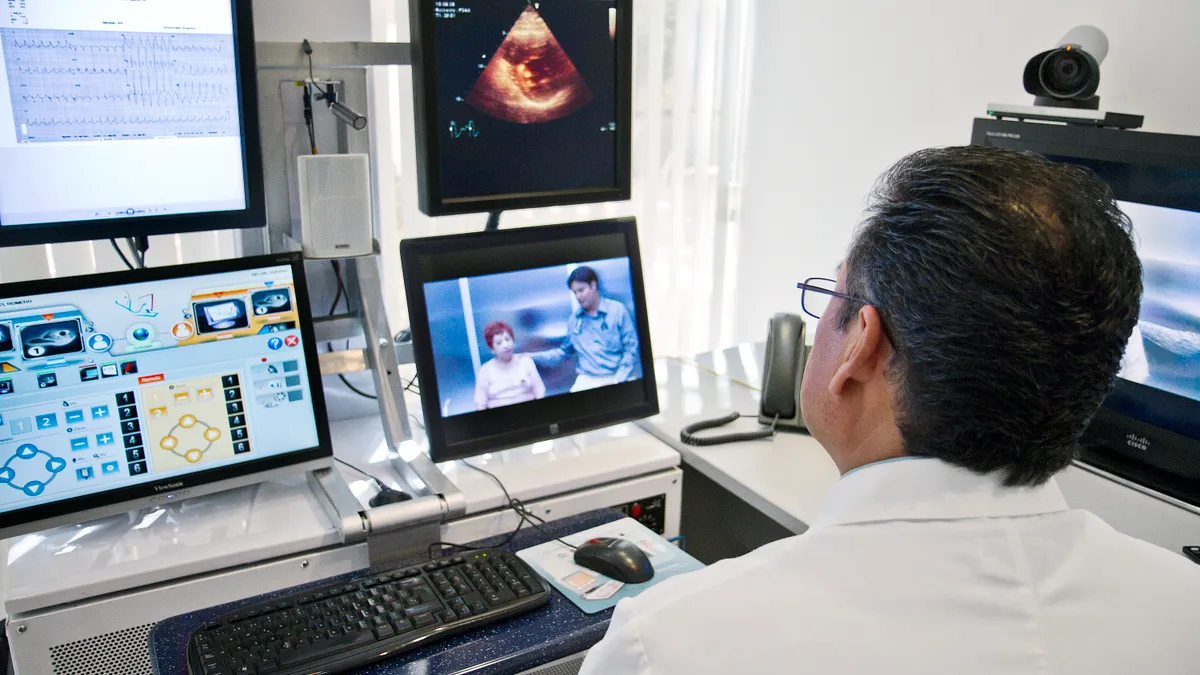Dive Brief:
- New government data puts in stark relief how dramatically telehealth use exploded last year, with the share of Medicare visits conducted virtually skyrocketing from just 840,000 in 2019 to 52.7 million in 2020.
- That's a nearly 63-fold increase. Specialists like behavioral health providers saw the highest telehealth use relative to their peers, according to the report from HHS' Office of the Assistant Secretary for Planning and Evaluation.
- Other interesting findings include that telehealth services were accessed more in urban areas than rural ones, and Black Medicare beneficiaries were less likely than White beneficiaries to use virtual care.
Dive Insight:
Telehealth was a valuable tool in ensuring access to care last year as COVID-19 swamped the U.S. medical system. As a result of consumer demand and laxer restrictions on virtual care from Washington, telehealth visits for Medicare beneficiaries went from hundreds of thousands pre-pandemic to tens of millions in 2020, with many beneficiaries using virtual care for the first time.
But it's still unclear how many COVID-era flexibilities Washington will continue after the national health emergency expires, how much payers will decide to reimburse for the service and how much patient demand will remain once fears of in-office virus transmission are less acute.
CMS Administrator Chiquita Brooks-LaSure said her agency planned to use the insights from the ASPE report to inform future Medicare telehealth policies.
During the pandemic, CMS has temporarily waived a slew of previous limitations on telehealth, including geographic restrictions and letting Medicare beneficiaries receive telehealth in their home. Outside of the COVID-19 public health emergency declared early last year, Medicare only paid for virtual services in select (mostly rural) areas and mostly required beneficiaries to receive telehealth in medical facilities.
Regulators have already enshrined some of the flexibilities. CMS recently announced that Medicare will permanently pay for mental health visits furnished by rural health clinics and other health centers via telehealth. The agency is also eliminating geographic barriers and allowing patients to receive care in their homes for the diagnosis, evaluation and treatment of mental health disorders.
Other virtual services added to the Medicare reimbursement list temporarily during the public health emergency will remain in place through the end of 2023, giving CMS more time to evaluate whether they should be permanently allowed.
Mental healthcare has emerged as a key clinical area for telehealth services. Experts expect that demand to continue, even after the pandemic wanes, due to a lack of mental and behavioral healthcare providers across the U.S., especially in rural areas, and the high cost of such treatment.
While overall healthcare visits for Medicare beneficiaries declined in 2020 as compared to 2019, telehealth was particularly helpful in ensuring access to behavioral healthcare during the pandemic, the ASPE report found.
In 2020, telehealth visits made up a third of total Medicare visits to behavioral health specialists, compared to 8% of visits to primary care providers and 3% of visits to other specialists, researchers said.













